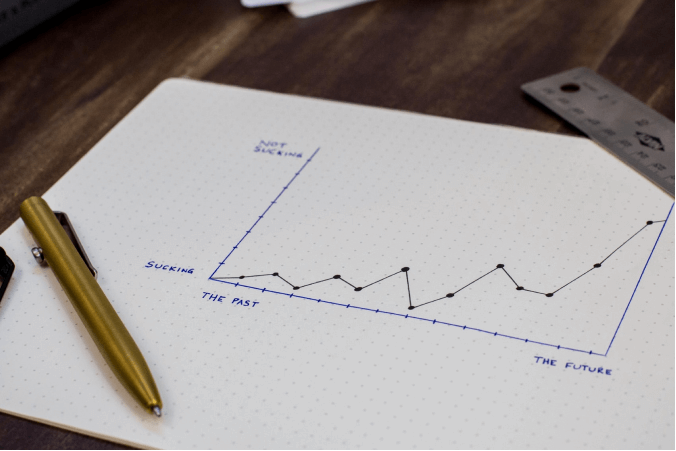Leo:
Anna, I wanted to ask you about my marketing report. I’m not sure about it …
Anna:
That’s OK, Leo. So what do you have to do?
Leo:
Choose a product or service then compare two organisations that produce it. I’m doing instant coffee.
Anna:
But haven’t you got a weekend job in a clothing store? Why didn’t you choose clothing?
Leo:
That was my first thought, because I thought it’d give me some practical examples, but when I searched for men’s clothing on the Internet there were hardly any articles. So then I looked for coffee and I found there were tons.
Anna:
Yeah, there are so many brands on the market now. OK, so how much have you actually written?
Leo:
I've done part one, on economic and technological factors. I found some good data on technological changes, how in Australia fewer people are buying instant coffee because of cheap coffee percolators that they can use to make real coffee at home.
Anna:
But there's also a movement away from drinking coffee...
Leo:
... switching to things like herbal teas instead because they think it's healthier? But that's not really to do with technology, it's more cultural. Anyway, for part two I'm comparing two instant coffee companies, CoffeeNow and Shaffers, and I've made this table of products.
Anna:
Right. Let's see ... so you've got the brand names, and prices and selling size, and descriptions. OK, the table looks good, you'll get marks for research there. Where will it go?
Leo:
In the section on the marketing mix, under Product'.
Anna:
Not in the appendix?
Anna:
OK, but it's too factual on its own, you need to add some comment in that section about the implications of the figures.
Leo:
Right. I'll do that. Now I want to say that I think that Shaffers is more of a follower than a leader in the coffee industry. Now, I'm putting that in the section on market share. Does that seem OK?
Anna:
Let's see ... so you've begun by explaining what market share is, that's important, but you've got to be careful how you give that opinion.
Leo:
Do you think it should go in another section?
Anna:
Well, it's fine where it is but you've got to back it up with some data or they'll say your report lacks weight.
Leo:
OK. One thing I'm worried about is finding anything original to say.
Anna:
Well, since this is your first marketing report, you're not expected to go out and do interviews and things to collect your own data, you're just using published data. So the analysis you do might not throw up anything that people didn't know before.
Anna:
But the focus is more on how you handle the data - I mean, you might take something like a graph of sales directly from a website, but what makes your work original is the perspective you provide by your interpretation of it.
Leo:
Oh. You know, it's all so different from business studies assignments at school. It's really surprised me.
Anna:
What, how much research you have to do?
Leo:
I expected that. It's more ... I knew exactly what I had to do to get a good grade at school - and I knew I'd be expected to go more deeply into things here, but I haven't got information on how the lecturer is going to grade my work - what he's looking for.
Anna:
Well, one thing you have to remember is that in a marketing report you've got to have what they call an executive summary at the beginning. I forgot that and I got marked down.
Leo:
Yeah, I've drafted it. I've got an overview.
Anna:
Have you got something about the background there?
Leo:
So I've just made a summary of the main points. I wasn't sure whether or not I should have my aims there.
Anna:
No, that's too personal. The executive summary is just, like, what a manager would read to get a general idea of your report if he was in a hurry.
Leo:
Right. Then I'm OK for the first main part, all of the macroenvironment stuff, but it's when I get onto the problems section ... I've listed all the problems that CoffeeNow and Shaffers are facing, but then what?
Anna:
Well you have to prioritise, so indicate the main problems, and then you analyse each one by connecting it with a theory... that's where your reading comes in.
Anna:
Have you done your implementation section yet?
Leo:
I've thought about it - so that's where I write about what could be done about the problems.
Anna:
Yes, and it's got to be practical so don't forget to specify things like who would be involved, and the cost, and the order that things would be done in.
Leo:
Right. Well that shouldn't take long.
Anna:
You'd be surprised. Actually that's the bit that tends to get badly done because people run out of time. That and the conclusion...
Anna:
Well, it's got to draw out the main points from your report, so it's got to be quite general. You need to avoid introducing new stuff here, it's got to sum up what you've said earlier.
Leo:
OK. Thanks Anna. That's been a big help.
 Sau đó Anna có hỏi tại sao không chọn clothing
Leo trả lời rằng đó là "first thought"- "but when I searched for men’s clothing on the Internet there were hardly any articles."
Sau đó Anna có hỏi tại sao không chọn clothing
Leo trả lời rằng đó là "first thought"- "but when I searched for men’s clothing on the Internet there were hardly any articles." Leo nói tiếp "then I looked for coffee and I found there were tons."
Leo nói tiếp "then I looked for coffee and I found there were tons."


